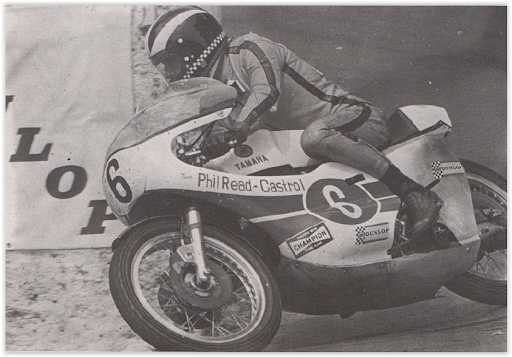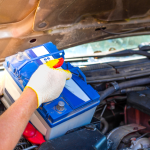MotoGP is now the pinnacle of motorcycle racing, captivating millions of fans around the world with its high-speed thrills and heart-pounding action. But how did this beloved motorsport evolve from modest beginnings to the global phenomenon it is today? The story of MotoGP history is one of technological innovation, fierce competition, and relentless passion for racing. Tracing its roots back to the early 20th century, MotoGP has become synonymous with speed, precision, and the spirit of competition.
In this article, we will explore the fascinating journey of MotoGP history, from its origins as a small-scale championship to the dazzling international spectacle that it is today. We’ll cover the key moments, the legendary riders, and the technological advancements that have shaped the sport over the decades.
The Early Days: The Birth of MotoGP

The story of MotoGP history begins in the aftermath of World War II when the Fédération Internationale de Motocyclisme (FIM) was formed to regulate motorcycle racing. The inaugural FIM Road Racing World Championship Grand Prix was held in 1949, marking the official birth of MotoGP as we know it today. This championship featured multiple classes based on engine capacity, with the 500cc class being the most prestigious.
In these early days, motorcycle racing was still very much a grassroots sport. The bikes were rudimentary compared to today’s advanced machines, and riders relied more on their bravery and skill than sophisticated technology. The tracks were often dangerous and unforgiving, making this period of MotoGP history a test of both man and machine.
Despite the humble beginnings, it didn’t take long for MotoGP to gain popularity. The raw excitement of watching motorcycles speed around twisting circuits, combined with the emerging rivalries between riders, began to capture the attention of fans across Europe.
The 1960s and 1970s: Technological Advancements and Rising Popularity
MotoGP history took a significant leap forward in the 1960s and 1970s, as manufacturers started to pour resources into developing faster and more advanced motorcycles. Japanese manufacturers like Honda, Yamaha, and Suzuki began to dominate the sport, bringing with them cutting-edge technology that would revolutionize the way motorcycles were built.
During this era, two-stroke engines became the dominant force in MotoGP, replacing the older four-stroke engines that had been the standard since the sport’s inception. These new engines provided more power and allowed for higher speeds, setting the stage for some of the most exciting racing the world had ever seen.
This period also saw the rise of legendary riders like Giacomo Agostini, who became one of the most successful racers in MotoGP history. Agostini’s dominance throughout the 1960s and early 1970s, winning an unprecedented 15 world championships, helped to elevate the sport’s profile. His rivalry with fellow rider Mike Hailwood added an extra layer of drama to the racing, making MotoGP history all the more captivating for fans.
By the end of the 1970s, MotoGP had firmly established itself as one of the premier motorsports in the world, attracting fans and competitors from all corners of the globe.
The 1980s: A New Era of Competition
The 1980s represented a crucial turning point in MotoGP history, as the sport began to transition into the modern era. While two-stroke engines continued to reign supreme, the level of competition became fiercer than ever, with new riders stepping up to challenge the established order.
One of the defining features of this era was the intense rivalry between American and European riders. The likes of Freddie Spencer, Eddie Lawson, and Wayne Rainey from the United States brought an aggressive style of riding that contrasted with the smoother, more calculated approach of the European competitors. These clashes on the track made for some of the most thrilling moments in MotoGP history.
This era also saw the rise of major corporate sponsorship in the sport. Companies recognized the commercial potential of MotoGP, leading to increased financial investment and greater media coverage. This surge in popularity was instrumental in propelling MotoGP into the global spotlight, paving the way for the massive fan base the sport enjoys today.
The 1990s: The Dominance of Mick Doohan
The 1990s marked another important chapter in MotoGP history, largely defined by the incredible success of one rider—Mick Doohan. The Australian dominated the 500cc class during this decade, winning five consecutive world championships between 1994 and 1998. His ability to consistently outperform the competition made him one of the sport’s most iconic figures.
Doohan’s reign also coincided with major advancements in motorcycle technology. The bikes of the 1990s were faster and more sophisticated than ever before, with innovations like electronic fuel injection and advanced braking systems becoming commonplace. These developments made the races even more competitive, with manufacturers constantly striving to outdo one another in the race to create the ultimate machine.
While Doohan’s dominance was a defining aspect of MotoGP history during this period, the 1990s also laid the groundwork for the next generation of riders who would go on to leave their mark on the sport.
The 2000s: The Valentino Rossi Era
No exploration of MotoGP history would be complete without mentioning Valentino Rossi, arguably the greatest and most influential rider in the sport’s long and storied history. Rossi burst onto the scene in the early 2000s, and his charisma, talent, and ability to win across different manufacturers made him a global superstar.
Rossi’s rivalry with other top riders like Max Biaggi and Sete Gibernau became the stuff of legend, providing fans with some of the most memorable moments in MotoGP history. His ability to read the race, make daring overtakes, and consistently perform under pressure earned him multiple world championships and solidified his place in MotoGP folklore.
The 2000s also saw a major shift in MotoGP, as the sport moved away from the traditional 500cc class to the new 990cc MotoGP class. This change brought even more power to the bikes and marked the beginning of a new era of MotoGP history, one defined by technological advancement and unparalleled speed.
The 2010s and Beyond: The Márquez Revolution
As MotoGP history progressed into the 2010s, a new name emerged to challenge Rossi’s dominance—Marc Márquez. The young Spaniard’s rise to the top was meteoric, and his aggressive, fearless style quickly earned him multiple world championships. Márquez’s ability to push the limits of what was possible on a motorcycle made him a fan favorite and a dominant force in the sport.
The 2010s also saw continued advancements in motorcycle technology, with manufacturers pushing the envelope in terms of aerodynamics, engine performance, and rider safety. The introduction of electronic rider aids, such as traction control and anti-wheelie systems, allowed riders to push their bikes even harder, resulting in faster lap times and closer races.
Márquez’s dominance in this era was reminiscent of legends like Agostini and Doohan, and his ongoing battles with riders like Andrea Dovizioso and Jorge Lorenzo added to the drama and excitement of MotoGP history. As the sport looks to the future, new talents are emerging, promising to add fresh chapters to this ever-evolving story.
Conclusion
The history of MotoGP is a testament to the relentless pursuit of speed, skill, and competition. From its humble beginnings in the 1940s to the technological marvels of today, MotoGP has grown into one of the most exciting and widely followed motorsports in the world. With legendary riders, unforgettable rivalries, and groundbreaking advancements in motorcycle technology, MotoGP history is filled with moments that have shaped the sport into what it is today.
As the sport continues to evolve, new riders, teams, and technologies will undoubtedly emerge, further enriching the legacy of MotoGP history. For now, fans can look back on decades of incredible racing and look forward to even more thrilling moments in the years to come.










